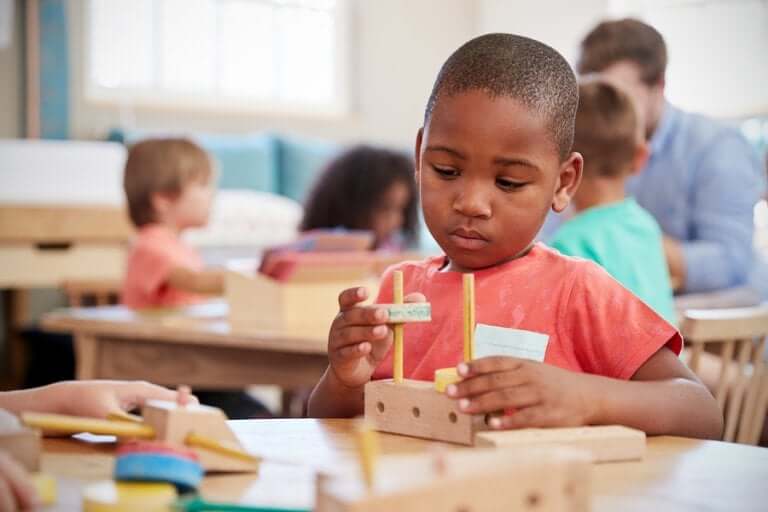Basic Principles of Competency-Based Learning

The aim of competency-based learning is to prepare students to face any challenge that the future may bring them. The main objective of this learning method is to give each student the possibility to master the skills they need in order to become a successful adult.
Students are able to control specific, tangible learning goals. It’s an educational model in which students have the individual support they need according to their individual learning needs. It’s a method that has some important principles.
Equality is the most important aspect of competency-based learning
Equality doesn’t mean giving each student the exact same thing. What it does mean is to give each student what he or she needs in order to reach the same goals as their fellow students.
This is a fundamental principle in competency-based learning. It’s about consciously seeking, understanding, and eliminating potential school prejudices. Students are taught and supported according to their individual strengths and weaknesses.
The expectations of achievement based on culture, social class, family income, or language are completely eliminated in this type of education model.
Competency-based learning helps to create an inclusive culture in which all students feel safe and respected.
Setting the competencies
Teachers must define the competencies in advance and set learning objectives for each student. What will they base these competencies on? Well, rather than simply evaluating the theoretical knowledge that the children have acquired, the competencies focus on a student’s practical understanding of the subject matter.
They can base these competencies on:
- Understanding of key concepts
- An ability to apply knowledge to specific important problems
- Mastery of relevant skills
It’s important to have the opinion of all teaching staff to develop ideas about what knowledge and skills a child would need in order to demonstrate mastery of a subject.

Transparency and accountability in competency-based learning
Knowing the learning goals that are set for the class (and the school as a whole) is critical. The teaching staff should present them clearly to both students and parents.
In a competency-based learning system, students know and understand these three factors when they start each stage:
- What they need to learn
- Definition of the skills required
- How teachers will assess their knowledge
When each student has the final goal clearly in mind, then he or she will be able to take more responsibility for their own education.
For example, let’s think of a student who is able to understand that he or she needs to use their math knowledge and apply it in a specific project, such as designing a small garden. They know they’ll need to use math skills to measure the size of the area or determine how many plants will fit in the garden.
If the student clearly understands what they need to do in order to be proficient and advance in the class, then they’ll be able to have more control over their learning. When they encounter a problem while working on the project, or when they notice they lack the specific knowledge to do it well, then they’ll know that it’s time to ask for help.
Teachers assess and control how the students learn
Teachers carry out different types of evaluation in their classes. However, in competency-based learning, we can find specific types of assessments that are particularly useful.

Formative assessments
These assessments help teachers determine where each student is in the learning process and adjust their teaching as needed. They give teachers the ability to adapt in real-time and identify key areas where students need to improve.
Authentic assessments
Having students take their knowledge and apply it to real-world situations is another great way to demonstrate mastery. In addition, students can develop the skills they’ll need in the future.
Authentic assessments can include using foreign language skills to write a letter to apply for an international exchange scheme. Another example could be using a knowledge of physics to design and build a stable tower out of a particular material.
Ultimately, competency-based learning helps students to develop and demonstrate mastery of a subject. It also builds a culture of equality and inclusion, and prepares students for life beyond the walls of the classroom.
The aim of competency-based learning is to prepare students to face any challenge that the future may bring them. The main objective of this learning method is to give each student the possibility to master the skills they need in order to become a successful adult.
Students are able to control specific, tangible learning goals. It’s an educational model in which students have the individual support they need according to their individual learning needs. It’s a method that has some important principles.
Equality is the most important aspect of competency-based learning
Equality doesn’t mean giving each student the exact same thing. What it does mean is to give each student what he or she needs in order to reach the same goals as their fellow students.
This is a fundamental principle in competency-based learning. It’s about consciously seeking, understanding, and eliminating potential school prejudices. Students are taught and supported according to their individual strengths and weaknesses.
The expectations of achievement based on culture, social class, family income, or language are completely eliminated in this type of education model.
Competency-based learning helps to create an inclusive culture in which all students feel safe and respected.
Setting the competencies
Teachers must define the competencies in advance and set learning objectives for each student. What will they base these competencies on? Well, rather than simply evaluating the theoretical knowledge that the children have acquired, the competencies focus on a student’s practical understanding of the subject matter.
They can base these competencies on:
- Understanding of key concepts
- An ability to apply knowledge to specific important problems
- Mastery of relevant skills
It’s important to have the opinion of all teaching staff to develop ideas about what knowledge and skills a child would need in order to demonstrate mastery of a subject.

Transparency and accountability in competency-based learning
Knowing the learning goals that are set for the class (and the school as a whole) is critical. The teaching staff should present them clearly to both students and parents.
In a competency-based learning system, students know and understand these three factors when they start each stage:
- What they need to learn
- Definition of the skills required
- How teachers will assess their knowledge
When each student has the final goal clearly in mind, then he or she will be able to take more responsibility for their own education.
For example, let’s think of a student who is able to understand that he or she needs to use their math knowledge and apply it in a specific project, such as designing a small garden. They know they’ll need to use math skills to measure the size of the area or determine how many plants will fit in the garden.
If the student clearly understands what they need to do in order to be proficient and advance in the class, then they’ll be able to have more control over their learning. When they encounter a problem while working on the project, or when they notice they lack the specific knowledge to do it well, then they’ll know that it’s time to ask for help.
Teachers assess and control how the students learn
Teachers carry out different types of evaluation in their classes. However, in competency-based learning, we can find specific types of assessments that are particularly useful.

Formative assessments
These assessments help teachers determine where each student is in the learning process and adjust their teaching as needed. They give teachers the ability to adapt in real-time and identify key areas where students need to improve.
Authentic assessments
Having students take their knowledge and apply it to real-world situations is another great way to demonstrate mastery. In addition, students can develop the skills they’ll need in the future.
Authentic assessments can include using foreign language skills to write a letter to apply for an international exchange scheme. Another example could be using a knowledge of physics to design and build a stable tower out of a particular material.
Ultimately, competency-based learning helps students to develop and demonstrate mastery of a subject. It also builds a culture of equality and inclusion, and prepares students for life beyond the walls of the classroom.
All cited sources were thoroughly reviewed by our team to ensure their quality, reliability, currency, and validity. The bibliography of this article was considered reliable and of academic or scientific accuracy.
- Vázquez, Yolanda Argudín. (2001). Educación basada en competencias. Educar: revista de educación/nueva época.
This text is provided for informational purposes only and does not replace consultation with a professional. If in doubt, consult your specialist.








